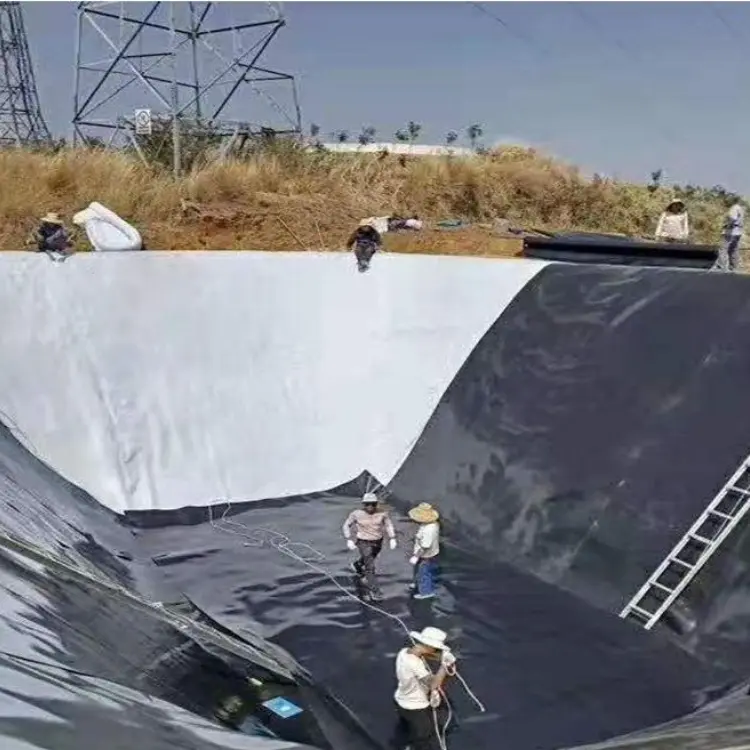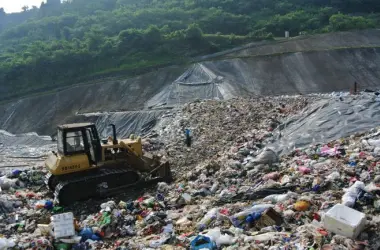 01. Overview of Solid Waste Treatment & Disposal Technologies
01. Overview of Solid Waste Treatment & Disposal Technologies
(1) Heightened environmental awareness necessitates advanced solutions for municipal solid waste (MSW), prioritizing reduction, resource recovery, and harm minimization. Modern sanitary landfills emerge as the most efficient approach for comprehensive waste management.
(2) Contemporary MSW landfills integrate:
- Composite liner systems
- Leachate collection/treatment infrastructure
- Gas extraction systems
- Final cover systems
Geosynthetics are essential for ensuring impermeability and structural integrity in these systems.
02. Classification & Geosynthetic Applications in Final Cover Systems
2.1 Final Cover System Categories
- Evapotranspiration covers
- Barrier-layer covers (clay/geomembrane composites)
- Capillary break designs
2.2 Geosynthetic Material Functions
| Material Type | Primary Function | Technical Requirement |
|---|---|---|
| Geomembranes (HDPE) | Primary hydraulic barrier | Thickness ≥1.5mm; permeability ≤1×10⁻¹² cm/s4 |
| Geosynthetic Clay Liners | Self-sealing secondary barrier | Bentonite saturation ≥85% |
| Drainage Geocomposites | Lateral leachate/gas transmission | Transmissivity ≥3×10⁻⁴ m²/s |
| Protective Geotextiles | Anti-puncture reinforcement | Grab strength ≥1,200N |
03. HDPE Textured Geomembrane with Welding Edge

3.1 Critical Construction Protocols
- Subgrade Preparation: Achieve compacted, debris-free surface (max. 20mm undulation/3m)
- Installation & Welding:
- Deployment by tension-controlled machinery
- Dual-track fusion welding (temperature: 280°C–320°C)
- Non-destructive testing (vacuum/spark methods) by certified technicians
- Longevity Measures:
- UV stabilization via hindered amine light stabilizers (HALS)
- Physical protection: Minimum 600mm soil cover or underwater submersion
3.2 Nitrogen-Textured Surface Technology
- Eco-friendly production: Physical foaming with nitrogen gas (zero chemical foaming agents)
- Adjustable roughness: 0.3–1.2mm asperity height
- Performance compliance: Meets tensile strength (≥25MPa) and tear resistance (≥100N/mm) standards for national critical projects
04. Construction Quality Assurance
- Subgrade Integrity: Unified compaction density (≥95% Proctor); root/rock removal
- Welding Validation:
- 100% seam peel/shear testing
- Automatic defect logging with GPS coordinates
- Operational Preservation:
- Antioxidants (e.g., phenolic resins) to delay oxidative degradation
- Minimum cover depth: 600mm for soil; 1.2m for aquatic environments
Technical Compliance Verification:
- Permeability: Third-party certified ≤1×10⁻¹² cm/s (ASTM D5883)
- Seam strength: ≥90% base material strength (GRI GM19)
- UV resistance: Retains 80% tensile properties after 10,000 hrs weathering (ASTM D7238)
 01. Overview of Solid Waste Treatment & Disposal Technologies
01. Overview of Solid Waste Treatment & Disposal Technologies